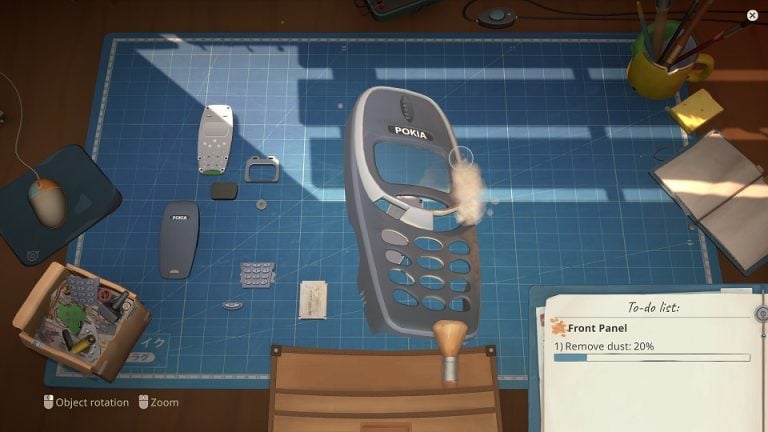Written by. Nick Mosier based on the original Japanese article (original article’s publication date: 2022-06-21 12:53 JST)
Many gamers are knowledgeable about the released games they’ve played, but how much do they know about how they were made? With many people not being familiar with what making games entails, there are likely many aspects of the process that game developers wish players better understood.
PushDustIn, who works at Kyoto-based VR/AR game developer CharacterBank as a PR/Community Manager, took to Twitter on June 17 (JST) to poll game developers about what they wished the public knew about making games. The tweet ended up getting a big response from developers, and we wanted to take the opportunity to introduce some of them here.
[Update 2022/06/23 10:15 JST] fixed PushDustIn’s business title
To start, PushDustIn gave two examples from their own experience. The first being that “a good idea doesn’t make a good game. A good team does.” No matter how good the idea is, it lives or dies based on the people behind it.
The second is how development cycles have a list of priorities. We’ve likely all played a game and thought “why didn’t they implement this feature or that feature?” In PushDustIn’s example, something like a serious bug may have taken priority even if it was something the developers wanted to implement.
Game Development is Hard
One recurring answer through many of the responses was that game development is hard. Riot Games technical designer George Oliver added, “game dev is hard in ways you haven’t even thought of.” Senior VFX artist at Hanger 13, the studio behind the recent Mafia titles, Brian Byrne shared a similar sentiment saying many good games get cancelled and that it’s a miracle when one comes out. Many others also chimed in about how difficult it is to bring a game to the finish line.
A more concrete example about the difficulties of development came from Melissa Kelly who is a character artist on Overwatch at Blizzard Entertainment. Melissa points out how even making character skins is a time-consuming process that takes around 2 to 3 months, with new characters taking much longer and requiring a lot of iteration. This tweet was likely made to combat the notion of “it’s just a skin. Those don’t take much time.”
Bungie senior activity designer Max Nichols brought up how remasters, remakes, and ports take much more work than most people realize. Despite there already being an original version, Nichols says it’s still around 25 to 50% of the work it would have taken if the game was being made brand new.
Former Sega producer and Digital Eclipse Executive Producer Stephen Frost mentioned that the games we play are made by hard working developers and hopes that developers are shown at least a bit of respect by players.
Game development costs money
Crystal Dynamics designer Brian Waggoner highlighted that making games isn’t cheap. While the tweet didn’t have specific examples, in addition to development costs, more recent games also have support costs post launch that Waggoner says, “is far higher than the average player knows.” The huge risk that comes with failure is likely why so many projects get cancelled as alluded to earlier.
Snowhaven Studios writer Kristi Jimenez brought up how visual novels aren’t cheap to make and listed out what needs to be accounted for in their development. If art, writing, music, GUI/UI development, proofreading, voice acting, and everything else involved can’t be done by one person, then people who can do those things need to be hired. This response is likely aimed at how many people generally underestimate the cost required to make a visual novel.
QA
There were also numerous replies regarding QA (Quality Assurance). Robin C who does QA at Steel Wool Studios known for the Five Nights at Freddy’s series brings up that QA isn’t in charge of fixing bugs despite what some may think. QA finds and reports on bugs so that they’re easier for developers to fix.
Lead programmer at Double Eleven Matt Phillips says that QA will find and report on every bug in a game. And while a game may ship with bugs, Phillips says it’s a decision that’s out of QA’s hands—something he’s trying to change with his team.
Twitter user Vasin who explained that they worked in QA for two years added, “around 60%-80% of my bugs got WNF’d (Will Not Fix) by the devs.” Vasin says it’s frustrating but that the decision comes from higher up the chain and isn’t the fault of the developers.
Technical project management director at Epic Games Glenn White added that 1,000 QA people could play a AAA game for an entire year and the amount of time still wouldn’t match how much the game is played by players within two hours of it launching. White is likely alluding to how difficult it is to reveal every bug through just QA.
EA senior researcher Jessica Tompkins adds that player feedback left on sites like Reddit, in surveys, and other social media are seen by people across numerous departments from development to marketing. While companies can’t implement every request, the tweet shows that leaving feedback isn’t a wasted effort.
Developers aren’t lazy
Another response that stood out were those saying developers aren’t lazy. For example, online, you can often see a game’s community comment “lazy devs” when bugs or balance changes aren’t advancing as they think they should.
Blizzard Entertainment senior systems designer Andrew Carl says no one sets out to make a bad game adding that developers aren’t lazy. Carl says Developers make games because they have a passion for it despite being able to make more money with less stress in other industries. EA concept artist Nina Modaffari adds that AAA game developers have just as much passion for their work as their indie developer counterparts.
Aether Studios, known for their game Rivals of Aether, environment artist Mason Bys brought up the same subject adding, “99% of the reason games aren’t ‘good’ is a management issue,” attributing them to issues like lack of planning and time constraints. Bys concludes with, “devs aren’t lazy or bad at their jobs.”
Sean Phillips, a junior environment artist at ILMxLAB who are behind the Star Wars VR games, says that assets are reused all the time and that it’s not because developers are lazy. Phillips explains that remaking something that works from scratch is a waste of time and budget and that it can improve performance and decrease the file size of a game. Others also brought up the effectiveness of asset reuse.
The development process
Blueprint Games co-founder Katie Nelson explained why work-in-progress clips may look unpolished. Players may see a WIP and think it looks crude or give advice on how to polish it up, but Nelson says polishing something too early is risky because you may waste time tweaking the fine details of something that won’t make it into the final release. When games are revealed, they often note somewhere that the game is currently in development. This is likely so regular players understand that the footage or screenshots won’t necessarily reflect the final product.
WayForward business development director Adam Tierney brought up development schedules. According to Tierney, a game’s content is likely already solidified by the time a game is even announced. Tierney also says that if a game is one month away from release, the team doesn’t actually have enough time to implement a missing feature someone may ask for. It’s likely a case-by-case basis depending on the scope of the game and studio, but it goes to show just how packed development schedules are.
Game engine ≠ quality
Indie game developer Hazel Kennedy points out that the quality of a game isn’t dictated by the game engine. While Unity may have a reputation of being used with many bad games, Kennedy explains that this is because Unity has a lower barrier of entry for inexperienced developers and isn’t an issue with the engine itself.
Ben Luff of Avalanche Studios also mentioned how there are often misunderstandings around game engines. Luff also doesn’t like the practice of using a game engine as part of a game’s marketing. Ultimately, it’s not a game engine that decides a game’s quality but the developers who put the tools to good use.
Criterion Games concept artist Tommy Millar spoke about why some digital games cost more than their physical counterparts. According to Millar, it’s due to the “retailer’s ransom” and not greed on the part of the developers or publishers. Retail stores demand that digital versions not be priced lower than the physical version and will give a game bad shelf placement or outright not sell it if the demand isn’t met.
PushDustIn’s tweet drew in way more responses than we could possible cover here, so if you’re interested in seeing more, be sure to check the replies and quote tweets of the original.





